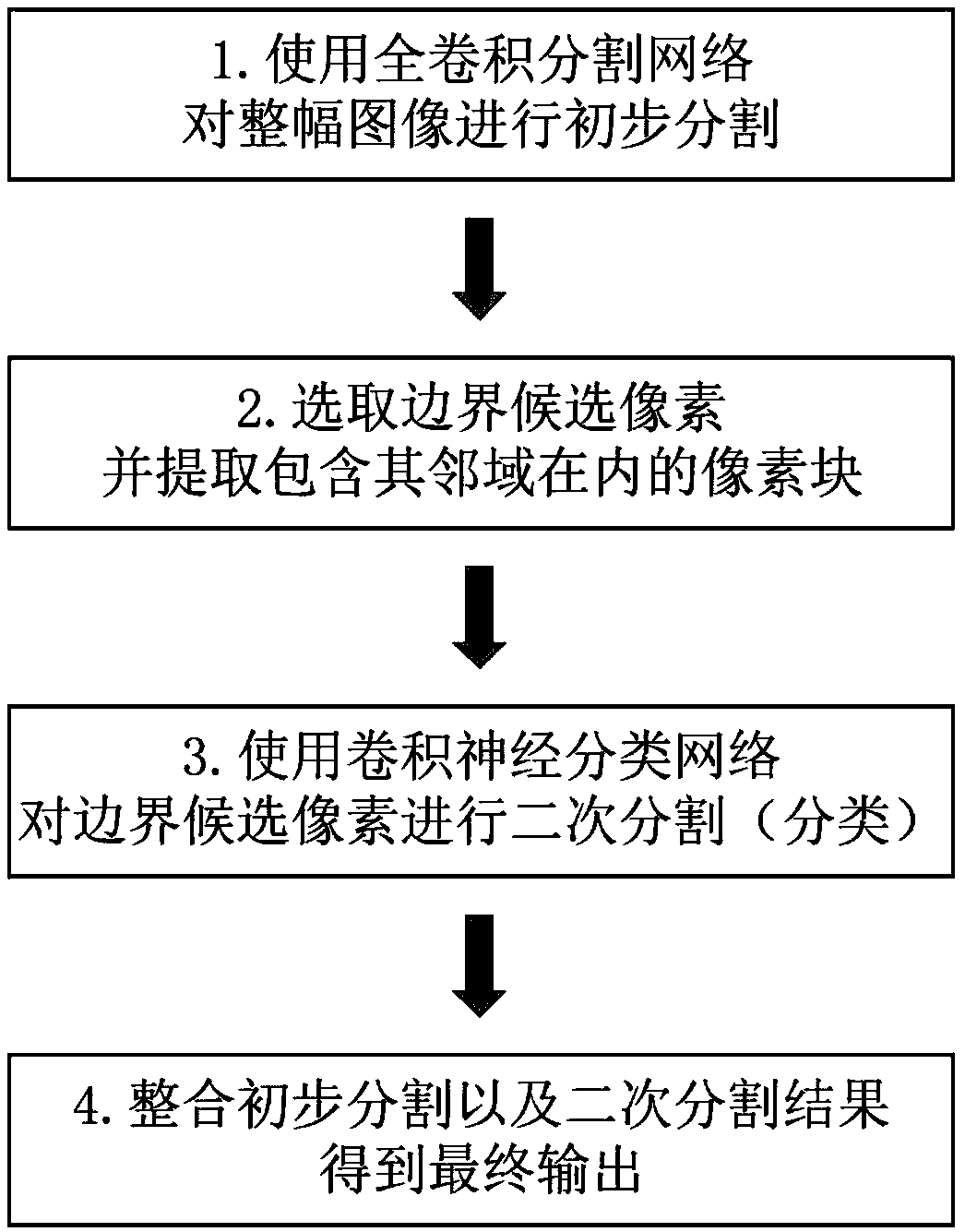A brain tissue extraction method based on total convolution neural network
A convolutional neural network and extraction method technology, applied in the field of digital image processing, can solve problems such as difficulty in accurately segmenting brain tissue, achieve refined segmentation goals, and ensure the effect of computing efficiency
Active Publication Date: 2019-02-26
SOUTHEAST UNIV
View PDF3 Cites 11 Cited by
- Summary
- Abstract
- Description
- Claims
- Application Information
AI Technical Summary
Problems solved by technology
At present, the existing traditional brain tissue extraction methods are difficult to achieve accurate segmentation of brain tissue
Method used
the structure of the environmentally friendly knitted fabric provided by the present invention; figure 2 Flow chart of the yarn wrapping machine for environmentally friendly knitted fabrics and storage devices; image 3 Is the parameter map of the yarn covering machine
View moreImage
Smart Image Click on the blue labels to locate them in the text.
Smart ImageViewing Examples
Examples
Experimental program
Comparison scheme
Effect test
Embodiment
[0061] The brain tissue extraction method based on the fully convolutional neural network of the present invention will be described below by taking the OASIS data set, the IBSR data set and the LPBA40 data set as examples respectively.
the structure of the environmentally friendly knitted fabric provided by the present invention; figure 2 Flow chart of the yarn wrapping machine for environmentally friendly knitted fabrics and storage devices; image 3 Is the parameter map of the yarn covering machine
Login to View More PUM
 Login to View More
Login to View More Abstract
The invention discloses a brain tissue extraction method based on a full convolution neural network, which comprises the following steps: firstly, a full convolution integral cutting network is used for preliminary segmentation of a two-dimensional original nuclear magnetic resonance image to obtain a preliminary segmentation result; secondly, a full convolution integral cutting network is used for preliminary segmentation of the two-dimensional original nuclear magnetic resonance image. Secondly, according to the preliminary segmentation results, the internal and boundary information of braintissue is separated. Thirdly, these pixels which can not be determined as brain tissue are selected as boundary candidate pixels, and these candidate pixels and their neighborhoods are sent to convolution neural network for secondary segmentation to realize classification and judgment. Finally, we integrate the internal segmentation results and the boundary segmentation results obtained from thesecondary segmentation, and obtain the final brain tissue extraction segmentation results. The invention carries out thick and thin twice segmentation, ensures the calculation efficiency of the method, realizes the fine segmentation goal, can be better applied to the brain magnetic resonance image, and realizes more accurate separation of brain tissue from non-brain tissues such as skull, eyeball,skin, fat and the like.
Description
technical field [0001] The invention belongs to the technical field of digital image processing, and relates to a brain tissue extraction method based on a fully convolutional neural network. Background technique [0002] The brain is one of the vital organs of the human body and an important part of our body. Human beings have never stopped studying the brain. Scientists hope to explore the unknown functions of the human brain by studying the complex structure inside the brain. Magnetic Resonance Imaging (MRI) technology is non-invasive, contains a large amount of information, and has the characteristics of multi-directional imaging. In MRI images, soft tissues with relatively low gray scale can be clearly distinguished. Therefore, important information such as the location and size of brain tissue anatomy in MRI images can be identified with the naked eye. In addition, MRI images have been widely used clinically because of their high signal-to-noise ratio, high resoluti...
Claims
the structure of the environmentally friendly knitted fabric provided by the present invention; figure 2 Flow chart of the yarn wrapping machine for environmentally friendly knitted fabrics and storage devices; image 3 Is the parameter map of the yarn covering machine
Login to View More Application Information
Patent Timeline
 Login to View More
Login to View More IPC IPC(8): G06T7/00G06T7/10
CPCG06T7/0012G06T2207/10088G06T2207/20084G06T2207/30016G06T7/10
Inventor 舒华忠吴颖真赵仕进孔佑勇
Owner SOUTHEAST UNIV
Features
- R&D
- Intellectual Property
- Life Sciences
- Materials
- Tech Scout
Why Patsnap Eureka
- Unparalleled Data Quality
- Higher Quality Content
- 60% Fewer Hallucinations
Social media
Patsnap Eureka Blog
Learn More Browse by: Latest US Patents, China's latest patents, Technical Efficacy Thesaurus, Application Domain, Technology Topic, Popular Technical Reports.
© 2025 PatSnap. All rights reserved.Legal|Privacy policy|Modern Slavery Act Transparency Statement|Sitemap|About US| Contact US: help@patsnap.com



